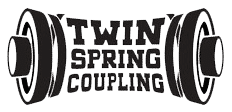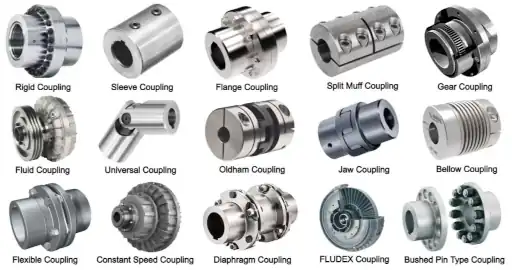The Pros and Cons of Different Coupling Designs in Industrial Applications – A Buyers Perspective
Table of Contents
When it comes to industrial applications, choosing the right coupling design can have a significant impact on operational efficiency, equipment lifespan, and overall costs.
As a buyer in this field, selecting the optimal coupling for a given application is a delicate balance of performance, cost, and long-term reliability.
To help guide this decision-making process, I’ll delve into the pros and cons of different coupling designs, including elastomeric couplings, gear couplings, disc couplings, grid couplings, and fluid couplings.
Understanding Couplings: What Are They?
Before diving into the various types of couplings, it’s essential to understand what a coupling is and why it’s critical for industrial applications.
A coupling is a mechanical device that connects two rotating shafts, allowing for the transfer of torque while accommodating misalignment and reducing the effects of vibrations or shocks.
Couplings are fundamental in a wide range of industries, from manufacturing to heavy-duty applications like mining, energy production, and wastewater treatment plants.
When selecting a coupling, there are key factors buyers need to consider, including:
- Torque transmission requirements
Angular, axial, and radial misalignment tolerance
Vibration dampening capabilities
Maintenance requirements
Material construction (metal, elastomeric, composite, etc.)
Environmental conditions (temperature, moisture, chemical exposure)
Each type of coupling design offers unique advantages and disadvantages depending on the specific application and operational conditions.
As a buyer, understanding the differences can help ensure you choose the right solution for your needs.
Elastomeric Couplings: Flexible and Vibration Dampening
Pros:
- Flexibility: Elastomeric couplings are known for their flexibility and their ability to accommodate high levels of misalignment, including angular, axial, and radial misalignments.
Vibration Dampening: These couplings have excellent vibration dampening properties, which helps protect connected equipment from premature wear and tear. This is particularly valuable in applications where machinery vibrates excessively, such as conveyor systems or motors in manufacturing plants.
Low Maintenance: Elastomeric couplings require minimal maintenance because they do not involve any metal-to-metal contact, reducing the need for lubrication.
Shock Absorption: The elastomeric material used in these couplings acts as a buffer to absorb shocks, making them ideal for applications involving sudden loads or stop-start operations.
Cons:
- Limited Torque Capacity: While elastomeric couplings are great for low to moderate torque applications, they are not suitable for high-torque scenarios, limiting their use in heavy-duty industrial settings like mining or power generation.
Temperature Sensitivity: The elastomeric material may degrade under extreme temperature conditions, both high and low, reducing the coupling’s lifespan.
Wear and Tear: Over time, the elastomeric material can degrade, especially in harsh environments. When this happens, replacement is necessary, though typically inexpensive.
Best Applications:
- Conveyor systems
Light manufacturing equipment
HVAC systems
Pumps and compressors
Gear Couplings: High Torque and Heavy-Duty Performance
Pros:
- High Torque Transmission: Gear couplings are known for their ability to transmit high torque levels, making them ideal for heavy-duty applications such as mining, steel production, and energy generation.
Durability: These couplings are made of metal, usually steel, which offers long-lasting durability and resistance to wear in harsh conditions.
Misalignment Tolerance: Although not as flexible as elastomeric couplings, gear couplings can accommodate slight misalignments, particularly angular and axial misalignments.
Wide Temperature Range: Gear couplings can operate in a broader range of temperatures compared to elastomeric couplings, making them more versatile for extreme industrial environments.
Cons:
- High Maintenance: Gear couplings require regular lubrication to prevent metal-to-metal contact, which can lead to wear and eventual failure. Neglecting this maintenance can result in increased operational costs.
Vibration Issues: Gear couplings don’t offer the same level of vibration dampening as elastomeric couplings, potentially increasing wear on connected equipment.
Complex Installation: Due to their heavy-duty nature, gear couplings can be more challenging to install and align, which may require specialized tools or personnel.
Best Applications:
- Mining machinery
Steel mills
Heavy-duty industrial equipment
Power generation
Disc Couplings: Precision and No Lubrication Required
Pros:
- High Precision: Disc couplings are designed for precision applications where accuracy in shaft alignment is crucial. They can handle high levels of torque and rotational speed while maintaining low levels of backlash.
No Lubrication Required: Unlike gear couplings, disc couplings do not require lubrication, reducing maintenance costs and the potential for contamination in sensitive environments.
Misalignment Tolerance: Disc couplings can handle angular and axial misalignments due to their flexible metal disc packs, making them versatile in various applications.
Durable: Made of metal, typically stainless steel or other high-strength alloys, disc couplings are highly resistant to environmental factors such as corrosion or high temperatures.
Cons:
- Limited Shock Absorption: While disc couplings excel in precision and torque transmission, they don’t provide the same level of shock absorption as elastomeric or grid couplings.
Complex Design: The multi-disc design can make installation more complicated compared to other couplings. Additionally, they may require careful alignment to avoid premature wear.
Cost: Disc couplings tend to be more expensive than elastomeric or gear couplings, which can be a limiting factor for budget-conscious buyers.
Best Applications:
- Precision machinery (CNC machines, robotics)
Pumps and compressors
Marine propulsion systems
Energy generation
Grid Couplings: Vibration Dampening with High Torque Capabilities
Pros:
- Vibration Dampening: Grid couplings offer excellent vibration dampening capabilities, making them suitable for applications where vibration control is critical.
High Torque Transmission: Similar to gear couplings, grid couplings can transmit high levels of torque, making them ideal for heavy-duty industrial applications.
Shock Absorption: The grid structure allows for some flexibility, absorbing shocks and reducing the impact of sudden loads, which can help extend the lifespan of connected machinery.
Misalignment Tolerance: Grid couplings can accommodate both angular and axial misalignments, though not to the same degree as elastomeric couplings.
Cons:
- Maintenance Required: Grid couplings need regular lubrication to perform optimally. Without proper maintenance, they can wear out more quickly than some other types of couplings.
Installation Complexity: The design of grid couplings can make installation more difficult, requiring precise alignment and lubrication to ensure smooth operation.
Cost: While not as expensive as disc couplings, grid couplings tend to be pricier than elastomeric alternatives.
Best Applications:
- Power transmission systems
Conveyor systems
Mining equipment
Heavy-duty manufacturing
Fluid Couplings: Ideal for Soft Starts and Load Protection
Pros:
- Soft Starts: One of the key advantages of fluid couplings is their ability to provide smooth, soft starts, which reduces the wear on connected machinery and minimizes the risk of shock damage. This is especially beneficial in applications like conveyors, where sudden starts can be damaging.
Overload Protection: Fluid couplings can protect machinery from overloads by slipping under heavy loads, which prevents damage to motors and other components.
No Mechanical Wear: Because fluid couplings use hydraulic principles to transfer torque, there’s no metal-to-metal contact, which significantly reduces the wear and tear on the coupling.
Cons:
- Limited Torque Transmission: Fluid couplings are not suitable for high-torque applications, limiting their use in heavy-duty industrial sectors.
Efficiency Loss: There is a degree of efficiency loss due to the hydraulic nature of the coupling, meaning some energy is lost in the process of torque transmission.
Cost and Complexity: Fluid couplings tend to be more complex and expensive than simpler mechanical couplings, which can be a drawback for some buyers.
Best Applications:
- Conveyors
Pumps
Fans
Crushers and mixers
Choosing the Right Coupling: Key Considerations for Buyers
As a buyer, selecting the best coupling for your industrial application depends on a careful evaluation of various factors, including:
- Torque Requirements: Ensure the coupling you choose can handle the maximum torque levels of your application.
- Misalignment Tolerance: Consider how much misalignment your application can tolerate, both angular and axial. Some couplings, like elastomeric and disc couplings, can handle higher misalignments than others.
- Vibration and Shock Absorption: If vibration dampening or shock absorption is critical, elastomeric or grid couplings might be the best choice. Conversely, precision applications might favor disc couplings.
- Maintenance Needs: Buyers looking to minimize maintenance costs should consider couplings like elastomeric or disc couplings that don’t require lubrication.
- Environmental Conditions: Evaluate the operating environment. Gear and grid couplings tend to perform well in extreme temperatures and harsh environments, while elastomeric couplings may struggle in high-temperature conditions.
- Cost: Finally, consider your budget. While some couplings, like disc or fluid couplings, offer advanced performance, they come at a higher price.
The Pros and Cons of Different Coupling Designs in Industrial Applications – A Buyers Perspective Conclusion
Understanding the pros and cons of different coupling designs is essential for making an informed purchasing decision in industrial applications. Whether you’re looking for vibration dampening, high torque transmission, low maintenance, or precision, there’s a coupling design that fits your specific needs. By carefully
For a good place to start your search for your industrial couplings, come and see our range all from OEM and 3rd party coupling manufacturers.

